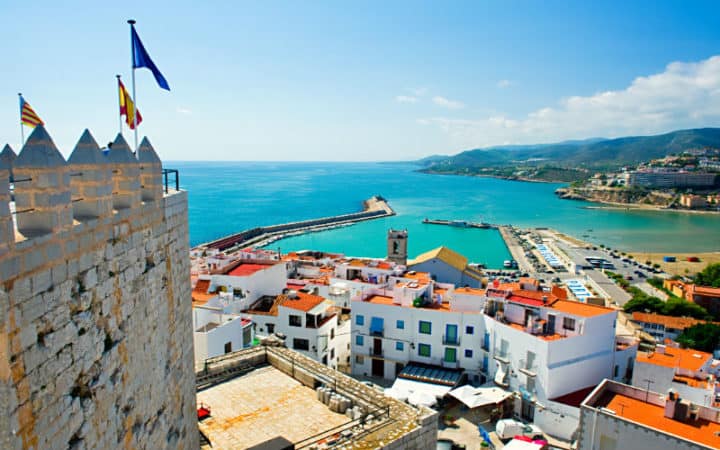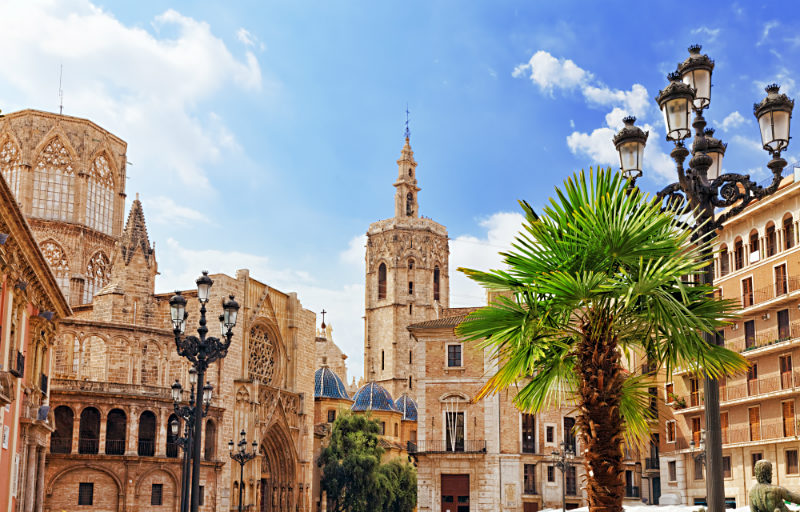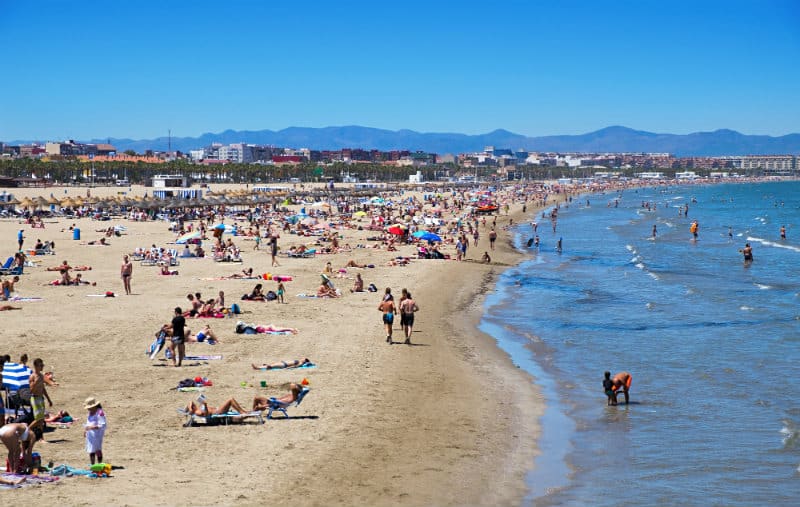
Gay Valencia City Guide
Planning to visit Valencia? Then our gay Valencia city guide page is for you

València
Capital of its own autonomous region and Spain’s third-largest city, Valencia is a thriving metropolis of about a million people. It is the largest port on the west coast of the Mediterranean
Founded in Roman times, Valencia’s history has been shaped by everything from Medieval times and the Moorish Crusades up to the Spanish Civil War.
Valencia has shaken off its reputation as a port city and is now recognized as an important artistic and cultural hub. It’s famous for its impressive architecture, proximity to the sea and being the birthplace of Paella.
Gay Scene
Although Valencia has not hit the gay tourism radar as much as say Madrid or Barcelona, the gay scene here is extremely vibrant. There are Gay Bars, Gay Dance Clubs, Gay Saunas and Gay Cruise Clubs scattered throughout the city.
The city is regarded by some as even more liberal than Madrid and Barcelona and was notable for having an elected lesbian mayor from 1991-2015. The city hosts a popular gay Pride parade in June.
 Square of Saint Mary's and Valencia Cathedral
Square of Saint Mary's and Valencia Cathedral
Getting to Valencia
By plane
Valencia Airport (VLC) also known as Manises Airport is located around 8km from the city centre. It is Spain’s tenth largest airport and is well connected to destinations throughout Europe, with a couple of stops in the Middle East and North Africa by flag carriers and budget carriers.
Metro lines 3 and 5 link the airport to the city. Single tickets cost €3.90 and take 25 minutes. Services run from around 5:30 am to half past midnight Monday to Friday with reduced hours at weekends and public holidays.
A cheaper alternative is taking bus line 150 into town for €1.45. The journey takes 45 minutes. It runs Monday to Saturday from 5:30 am to 10pm with reduced service on Saturday. It does not run on Sundays or public holidays.
A taxi rank operates from the airport and journeys into the city centre should cost around the €20 mark. Any journey to and from the airport has an automatic supplement of €5.40.
By ferry
Valencia has scheduled ferry services to and from the Balearic Islands and Algeria. It is also a popular destination for some cruises. Metro lines 4, 5 and 6 provide rail access to the port.
By train
The Estació del Nord offers good connections to destinations in mainland Spain. A high-speed service runs regularly to both Valencia and Madrid. Unlike other European cities, there are no direct international connections.
Getting around Valencia
On foot
The best way to take in the sights is by foot. To traverse the city in a straight line shouldn’t take more than 45 minutes, varying depending on what pace you're taking. You’ll only need to take transport if travelling further afield.
By metro and tram
FGV operates Valencia’s modern metros and trams. They run from 5:30 am to 11 pm Monday to Friday and from 6 am to 11:30 pm on weekends. Singles start at €1.50 and ten journey passes at €7.20 depending on zone of travel.
By bus
Buses are a good way of taking in the city. Tickets start at €1.50. Services start at 4 am and end at 10:30 pm Monday to Thursday with a night service lasting until 2am (3:30 am Friday and Saturday). Buses do not run on Sundays.
By taxi
Taxi ranks are commonplace and you can hail a taxi from the side of the road. Official taxicab companies are white with green lights on top. Private taxi firms exist but note that meters start as soon as the driver picks up the call.
El Cabanyal and La Malvarrosa Beach
Where to Stay in Valencia
Valencia has an excellent range of hotels to suit all budgets. For some of the best Valencia hotels for gay travelers, visit our Gay Valencia Hotels page.
Things to See & Do in Valencia
- City of Arts and Science – an impressive modernist building by noted architect Santiago Calatrava. Here you’ll find a planetarium, a science museum, an IMAX cinema and more. You can take walking tours here.
- Valencia Cathedral (The Seu) – impressive Gothic cathedral that has also collected Renaissance, Baroque and Neo-Classical architectural styles over the centuries. You can take a trip up the Micalet Tower for views of the city.
- The Silk Exchange –an impressive example of the Valencian-Gothic style of architecture. This is a fascinating glimpse into Valencia’s economic history.
- The Mercat Central – Modernist building and a perfect spot to pick up fresh ingredients, especially if you’re going to make that Valencian classic Paella.
- Playa de Malvarossa – the most popular of Valencia’s city beaches. Here you can find beach bars, cafes and hotels to unwind and relax at.
- Costa Del Azahar – north of Valencia is this beautiful stretch of coast that is notably less developed than the rest of the Costas. Worth extending your stay purely to explore the gorgeous villages dotted up and down the coast.
Read More: Things To Do in Valencia.
When to Visit
Valencia has a pleasant Mediterranean coastal climate. April and May are the best time to visit as temperatures are warm and crowds aren’t so big. Winters are comfortable and quieter but some attractions have reduced opening hours.
In March the city hosts the Fallas where large papier-mâché models, usually satirical, are built and displayed in city blocks. Fireworks are almost incessant and a general party vibe prevails. There is also a pride festival in June.
Money
Spain is a Euro area country. Cash dispensers are widely available. Credit and debit cards are widely accepted. Hotels, banks and some local businesses also operate foreign exchange desks.
Join the Travel Gay Newsletter
Have we got something wrong?
Are we missing a new venue or has a business closed? Or has something changed and we have not yet updated our pages? Please use this form to let us know. We really appreciate your feedback.
